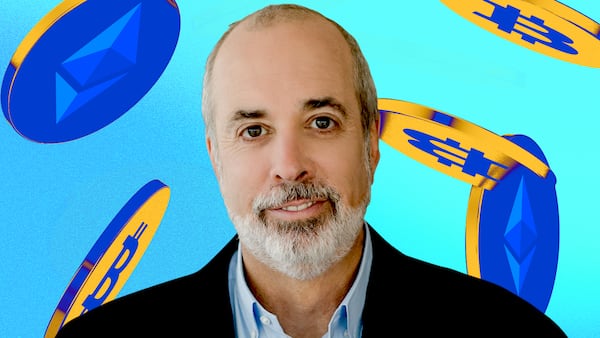- BlackRock’s IBIT is the firm's highest earning ETF.
- The fund raked in $187.2 million in the past year.
- Investors are paying a hefty premium.
BlackRock’s Bitcoin exchange-traded fund has officially out-earned the company’s flagship ETF, an S&P 500 tracker dubbed IVV.
It’s a striking haul: $187.2 million in revenue for the newcomer in the past year, just edging out the $187.1 million the older ETF brought in over the same time period.
But the real story lies under the hood.
Despite managing about $75 billion — which pales in comparison to IVV’s gargantuan $624 billion under management — IBIT charges a 0.25% fee.
That’s more than eight times IVV’s fee of 0.03%.
In short, investors are overpaying for access to Bitcoin. Big time.
New economics
Among the 11 providers of spot Bitcoin ETFs, BlackRock’s fee rate lives roughly in the middle.
The cheapest fund on offer is Franklin Templeton with 0.19%, while the most expensive is Grayscale at 1.5%.
Five funds charge the same amount as BlackRock, according to data compiled by Dragonfly data analyst Hildebert Moulie.
More traditional ETFs charge anywhere between 0.03% to 0.1%.
It’s a stark reminder of the new economics of crypto ETFs. While traditional index funds have raced to the bottom on fees to attract long-term capital, their nascent relatives are still in gold-rush mode.
The perceived scarcity of Bitcoin, strong brand trust in BlackRock, and the decade-long wait for an instrument of this kind may have given the firm leeway to charge a premium for exposure.
And that premium is paying off.
IBIT has grown for 17 of the past 18 months and holds more than half of all Bitcoin in ETFs. The 11 providers now hold over 1.2 million Bitcoin, worth about $134 billion.
Old and cheap
The question now is: how long can it last?
Just as it came for equity ETFs, fee compression is likely coming for crypto.
The average age of a “mega-stud” ETF is 20 years old, while their fee is 0.06%, according to Bloomberg Intelligence ETF expert Eric Balchunas.
“Old and cheap rule the market,” Balchunas wrote on X last year.
Stark lesson
Discounting the costliness of IBIT, there’s a stark takeaway from its profitability.
BlackRock has made as much from a niche, high-fee crypto product as it has from a flagship index fund that underpins retirement portfolios globally.
It’s not necessarily a crypto win — but certainly a lesson in how much investors are willing to pay when something feels new, scarce, and disruptive.
Pedro Solimano is a markets correspondent based in Buenos Aires. Got a tip? Email him at psolimano@dlnews.com.








